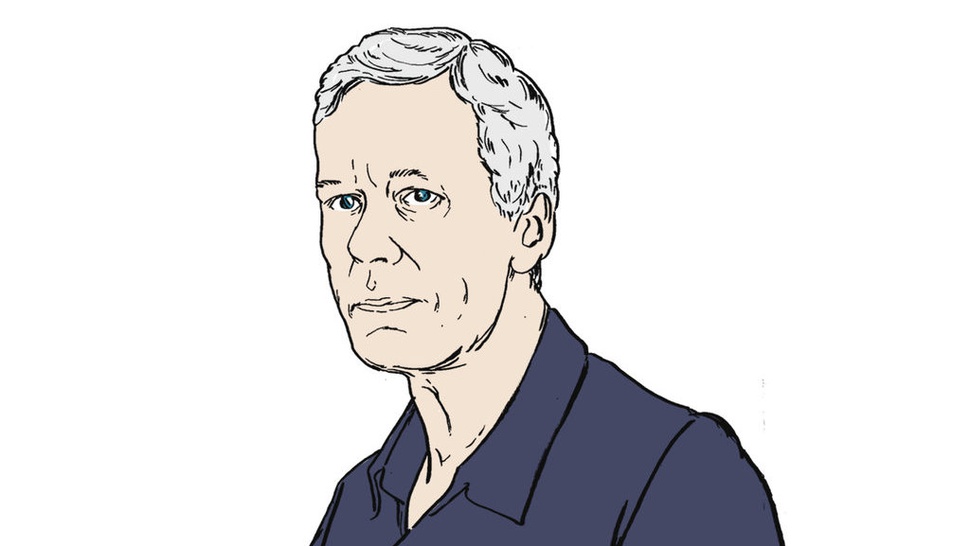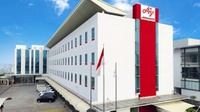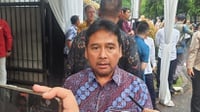tirto.id - The gruesome murder of an African American man, George Floyd, whose life was throttled out of him by a white police officer with full weight of his body pressing through his knee onto Floyd’s carotid artery in broad daylight on a Minneapolis street on Monday 25 May, has lit a powder-keg—not just in America but around the world.
Four hundred years of racism, genocide, and injustice by whites against non-whites have been catalysed at an epic moment in world history. The potent mix of pandemic, lockdown, economic collapse and turbo-charged social media have magnified the historical impact of this very public murder a billion-fold.
Now it is as though the world is being torn apart by a twin tsunami—coronavirus and racism. This is a revolutionary moment in world history. Its resonance will be felt for years to come.
One physical manifestation of this revolution has been the destruction, defacement, and removal of statues, mostly by anti-racist protesters but sometimes by community-savvy local authorities. These have included slave traders (Edward Colston [Bristol], Robert Milligan [West India Dock, London], Sir Francis Drake [Plymouth, UK]), confederate generals (Robert E. Lee [Montgomery, Alabama], J.E.B. Stuart [Richmond, Virginia]), racist national heroes (Churchill [Parliament Square, London], Colbert [National Assembly, Paris]; Baden-Powell [Poole]), genocidal monarchs (Leopold II of the Belgians [Antwerp, Gent and Brussels]), and explorers (Christopher Colombus [Boston, Mass.; Richmond, Virginia; Galway, Ireland]; Henry Morton Stanley [Denbigh, Wales, UK]).
In Oxford, England, a long running campaign to remove the statue of the nineteenth-century imperialist and racist, Cecil Rhodes (1853-1902), from Oriel College, which he liberally endowed, has been reignited.
Top Priority: Decolonising the Mind
Indonesians are no strangers to such iconoclasm. In the space of five short months between their declaration of national independence on 17 August 1945 and the departure of their Republican government to Yogyakarta in early January 1946, nearly every statue, street name and public space in the former colonial capital, Jakarta (pre-1942, Batavia), which smacked of the Dutch were torn down or defaced. This was a thoroughgoing defenestration of the colonial past.
Such cultural iconoclasm would be unimaginable in neighbouring Singapore, Malaysia, Brunei and the Philippines where statues of Raffles (Singapore River), Sir Frank Swettenham (First Resident-General of the Federated Malay States, 1896-1901, Muzium Negara, Kuala Lumpur), Winston Churchill (Churchill Museum, Bandar Seri Begawan) and General Douglas MacArthur (Tacloban City, Leyte, landing ground) still grace public squares, national museums and beaches.
In such a time of historical revisionism, such iconoclasm may seem a "quick fix". But this is historically short-sighted. Past injustices cannot be obliterated by the physical toppling statues and institutional rebranding. Indonesia’s first President, Sukarno (in office 1945-1966), never tired of reminding his compatriots that mere physical independence from the former colonial power was not enough. It had to be followed by a throughgoing "decolonisation of the mind". As the French West Indian psychiatrist and political philosopher, Frantz Fanon (1925-1961), put it, ‘Imperialism leaves behind germs of rot which we must clinically detect and remove [not just] from our land but from our minds as well’.
That said, some statues have long drawn controversy. The statue of the Bristol-born philanthropist and slaver, Edward Colston, was erected in 1895, and has been the target since the 1990s of a long-running campaign aimed at its removal. Locals have pressed for it be transferred to an appropriate local museum, such as the newly opened (2011) ‘M Shed’ dockside museum dedicated in part to Bristol’s role in the trans-Atlantic slave trade.
This is a story which needs to be told. The slave trade made a massive contribution to Britain’s rise as a global trading power in the ‘long eighteenth century’ (1660-1832). By 1750 accrued profits from this trade in human misery were almost on a par (£3.800.000) with the total (£4.000.000) invested in the country’s industrial infrastructure. Indeed, the great Atlantic ports of Bristol, Liverpool (a fishing village in the early eighteenth century) and Glasgow all rose to prominence in this period as slave ports. At least a third of the 12.8 million West Africans sold into slavery in the New World were transported on British-owned ships.
Few present-day citizens of the United Kingdom know this story. I was certainly never taught it at school. And it is only very recently—since 2003 in terms of the London Docklands Museum and 2007 for Liverpool’s International Slavery Museum—that there have been museums dedicated to this key aspect of Britain’s rise to global prominence.
The forcible removal or destruction of statues, arguably, sets back this task of national truth telling. The fact that public authorities in Britain and its wider citizenry contributed to the erection of statues to slave traders like Colston or public apologists for the slave trade, like Sir Henry Dundas (Lord Melville) (1742-1811), first Secretary of State for War (1794-1801), in Edinburgh who personally stymied the enactment of abolitionist legislation for a decade and a half (1792-1807), tells us much about what sort of country modern Britain is.
Growing up (1948-1955) as a colonial child in former ‘British Burma’ in an Anglo-Irish family of Liverpool extraction, colonial entitlement was my default setting: “Remember, Peter, that you are an Englishman! That means you have won the first prize in the lottery of life!” Cecil Rhodes’ racist phrase became my childhood refrain. It has taken many years of distance from that circle of white privilege in Indonesia to disabuse me of that world view.
Honest Discussion of Historical Wounds
So where do we go from here? Clearly black lives matter. And the only way we can make them matter is by looking unblinkingly at our respective national and community histories and teaching these effectively. Certain wrongs should immediately be put to rights.
Besides removing statues of slavers and génocidiaires—King Leopold II of the Belgians looms large here—there should be a thoroughgoing review of public monuments and the names used for state institutions. It is bizarre, for example, that no less than ten of America’s top military training schools and installations are named after senior Confederate officers. Fort Benning in Georgia (founded 1909) and Fort Bragg in North Carolina (founded 1918) are both named after Confederate generals—Henry L. Benning and Braxton Bragg—who took up arms against the United States (Union) Government during the American Civil War (1861-1865), a war fought by the Confederate forces to preserve the institution of slavery.
In the American context, one has to ask why such names—inspired by the Jim Crow era (late 19th/early 20th century) of institutionalized economic, educational and social disadvantages for African Americans living in the former slave-owning Confederate states of the South—are still deemed appropriate as monikers for revered military institutions in present-day America? Seen in this context the Black Lives Matter movement and the current anti-racist protests which have swept the United States since George Floyd’s death are long overdue.
In Indonesia too such housekeeping and truth-telling is likewise urgent. It has its own ‘Jim Crow’ era in the context of the 32 years of ‘New Order’ dictatorship (1966-1998) under General Suharto to live down. Its own historical soul-searching has only just begun.
The BLM protest has never been more globalized. As a result, a lot of people start posting "Papuans Lives Matter" on social media. On Wednesday (17/6/2020), a group of students in Abepura, West Papua, took to the street demanding the release of seven Papuan political prisoners and anti-racist activists imprisoned by Indonesian government.
One has to ask about the appropriateness of the Megawati Sukarnoputri administration’s (2001-2004) five billion rupiah (in 2002 monetary values) expenditure on the major war memorial/monument at the Cilangkap Indonesian Army HQ in East Jakarta to the 3,625 Indonesian officers and men lost during the New Order’s illegal invasion and occupation of the former Portuguese colony of East Timor (1975-1999). Named the “Seroja” (lotus) monument after the bloody four-year initial campaign (1975-1979) to occupy the former Portuguese colony, it commemorates the largest military operation in Indonesia’s post-independence history (involving 30,000 troops at its peak). This bungled military campaign ended with a war crime when the Indonesian commanders used the denial of food resources and famine to starve the East Timorese into surrender.
As a contemporary commentator put it on Laksamana.net: “Megawati apparently came to the decision that history must be on the side of the warrior (prajurit), no matter the damage done by their military superiors”.
A decade later in July 2013, Megawati’s successor, President Susilo Bambang Yudhoyono (in office 2004-2014), was more circumspect when opening another monument to the Indonesian military at Cilangkap—the Monumen Perjuangan Mempertahankan NKRI (Monument to the Struggle to Defend the Unitary Republic of Indonesia). He reflected that, “A great nation is the one that can honour its heroes, fighters and predecessors. An intelligent nation is the one that can learn lessons from history for the sake of the future.”
Learning lessons for the sake of the future should begin now with a frank public discussion of the open wounds in society. And where better to begin than historical mysteries around 1965-1966, and Indonesia’s record in West Papua, Aceh, and East Timor?
==========
Read here for the Indonesian version of this article.
*) Isi artikel ini menjadi tanggung jawab penulis sepenuhnya.












